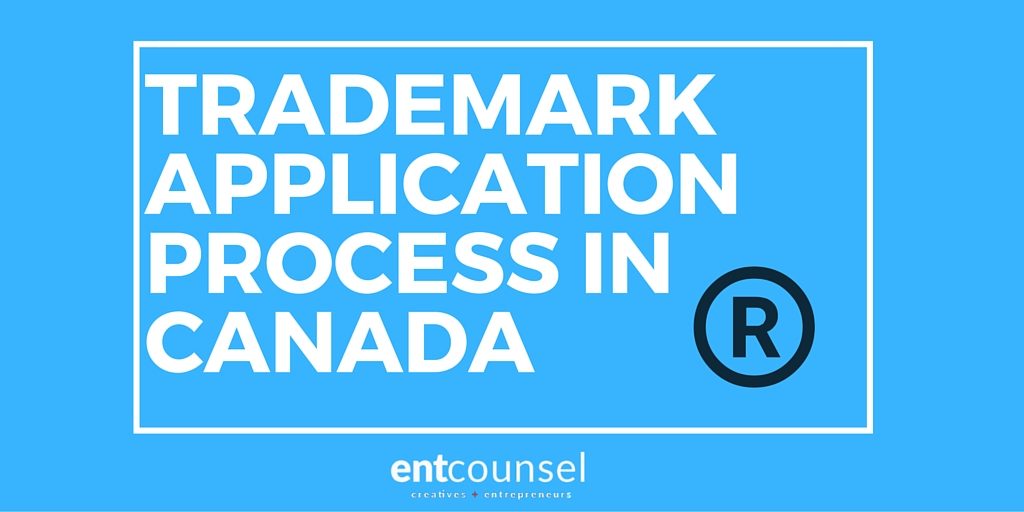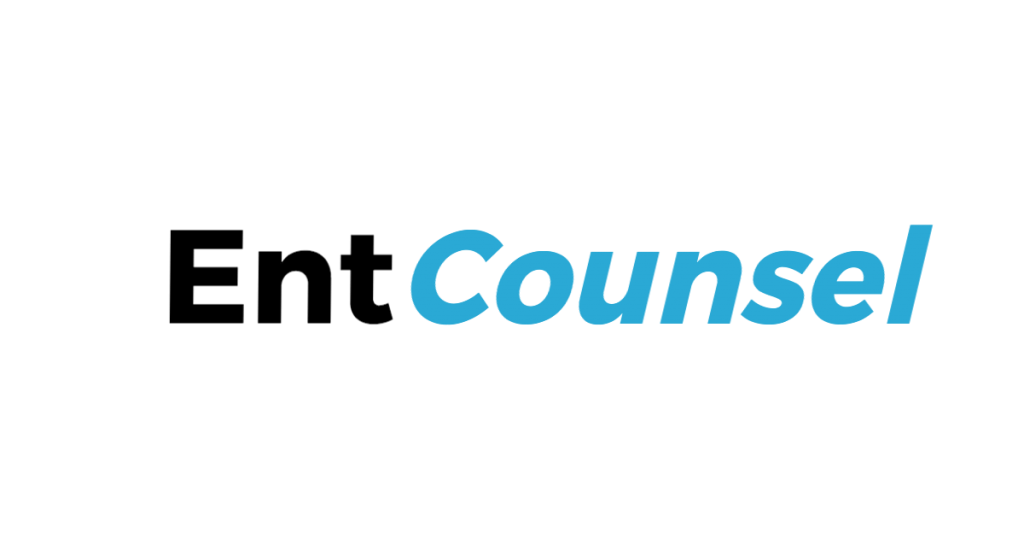Trademark Application Process
Entcounsel is a law firm for creatives and entrepreneurs in the areas of social media law, technology, entertainment, copyright and trademarks. The following post outlines the trademark application process in Canada. You may be interested in reading What Is a Trademark.
Entcounsel
STEP 1 – Filing a Trademark Application
A trademark registration is obtained to protect a brand name, logo or slogan. A registration gives you rights across Canada.
A trademark applicant must be a “person” entitled to registration also referred to as “legal entities”. The person or legal entity may be an individual, partnership, trade union, association, joint venture or corporation. A trademark can only be filed in the name of one individual (unless it’s a lawful association such as a partnership or joint venture)
A predecessor-in-title must be named, indicating previous ownership
Do a preliminary search of existing trademarks first to make sure your trademark or brand is available. You can do this yourself or hire a professional firm to this for you. When searching, make sure you also research words that are spelled differently but sound the same.
A NUANS search of business names is also recommended. You can conduct simple internet searches and NUANS search of business names to see if others are using your proposed name or a similar name. A lawyer or agent will also search the Trademarks database.
The trademark application can be filed online with a $250 government filing fee through a trademark agent or lawyer. You can do it yourself but it’s highly recommended you have it done properly. You will need to pay a separate fee to the agent or lawyer.
The trademark application consists of:
1) a filing fee of $250 for online applications
2) the application for trademark registration and if applicable,
3) a formal drawing
Once your trademark application is filed, you will get a filing date and application number usually within 1 day. You may be permitted some amendments to your application after filing but not all so make sure you have it right the first time. The good news is now that you get priority over your proposed trademark on that filing date even though your trademark is pending registration.
You also get a priority date for an application filed in another country within six months of the first filing.
The trademark application will now be entered into the Canadian Trademarks database. You will then receive a formal filing acknowledgment and a proof sheet with information about the application.
Once we submit our application, the Trade-marks office will create a file and we will receive a filing date and an application number. The application will be entered on the Canadian Trade-mark Database and other databases maintained by external companies. n
STEP 2 – Trademark Application Examination Process
Next, you will hear from the Trademarks Examiner who will provide an Examiner’s report. This can take approximately anywhere from 6 months to one year.
The application is reviewed by the Examiner to ensure compliance with the Trademarks Act and Regulations to determine if it can be approved for advertisement in the Trademarks journal
The Office of the Registrar of Trademarks will conduct a search of trademark records to locate any trademarks which may conflict with yours. The application is reviewed to ensure compliant with the Trade-marks Act and Trade-Mark Regulations to determine if it can be approved for advertisement
The Trademarks Examiner will notify you with an “Office Action” of any objections on your application such as whether your description of your wares or services are too broad, unclear or needs to be revised.
You will be notified of any objections by the examiner and you will have an opportunity to respond. If the examiner is not satisfied, then you will receive a letter that your application has been refused and providing you a list of the grounds for refusal. You can appeal to the Federal Court of Canada.
The Examiner may ask you disclaim the right to the exclusive use of certain words in your trade-mark.
The Examiner will conduct a search of the Register to see if there are any prior applications or registrations that are confusing with your application.
You can respond back to the Examiner addressing these concerns. If the Examiner is not satisfied with your response, you will receive a letter that your application has been refused along with a list of the grounds for refusal.
You may amend certain aspects of the application to address the Examiner’s concerns. You can also submit arguments to the Examiner for reasons why the application should not be amended.
The application gets prosecuted back and forth between the applicant or agent and the Examiner until the Notice of Allowance stage. This back and forth process can take several months to a year or more.
A trade-mark examiner then reviews our application to determine if the trade-mark can be approved for advertisement in the Trade-marks Journal. If it cannot be approved, we will be notified with an Examiner’s report and given the opportunity to amend certain aspects of the application so that it can be approved. We also have the opportunity to submit arguments to the Examiner if the application has been objected to. Each time we respond to an Examiner’s report, we will charge our hourly rate. We will then go back and forth prosecuting a trade-mark application to the Notice of Allowance stage. Reminder letters and filing declarations of use could also incur additional fees which are at a later stage.
If the Examiner does not move your application forward, you can appeal to the Federal Court of Canada.
STEP 3- Pre-Publication Search
The Examiner conducts a second search to make sure that there are no trademarks that are registered or applied for that could conflict with your proposed mark. This is prior to the advertisement in the Trademarks Journal.
STEP 4 – PUBLICATION
The application is advertised and published in the Trademarks Journal to allow for any oppositions or challenges to your application
The Trademarks Journal lists every application that has been approved for advertisement in Canada for that time period
The Trademarks Journal provides your name, address, file number, filing date, the trademark, whether the application is based on use or proposed use, any disclaimers/claims and the goods and services for which the trademarks are used or proposed to be used in association with.
Advertising allows a party to object to a trademark before its approved
STEP 5- OPPOSITION
An application advertised in the Trademarks Journal may be opposed by a party with valid grounds within two months of the publication date. They must file a statement of opposition or request an extension of time to oppose along with payment of a fee.
Opposition is a complex and lengthy process and we use litigation trademark counsel in the event that this arises
You can read more about opposition proceedings here.
STEP 6 – ALLOWANCE AND REGISTRATION
If the application is not opposed or if you are successful in an opposition proceeding, the application will be allowed for registration and you will receive a notice. The trademark can be registered once the government fee of $200 is paid.
If your application or part of it was based on “proposed use”, you will need to provide a sworn declaration stating you have commenced use of the trademarks with respect to those goods/services. You can request extensions of time if you haven’t used the mark for a particular good and service.
You will then be issued a certificate of registration and your trademark will be entered into the Register of Trademarks.
A registration fee and if you filed based on proposed use, a declaration of use indicating the mark is being used in association with the wares/services must be provided. You will then obtain an official Registration Certificate usually about 4 weeks later. The timeline for the entire process can vary anywhere from 12 months to 18 months or more from the date of filing.
Your registration is valid for 15 years and renewable every 15 years after payment of a renewal fee to the government.
We must send in the registration fee and if for the proposed use, a declaration of use indicating the mark is being used in association with the wares and services. An official Registration Certificate will then be mailed out to you. This timeframe for this whole process can vary. If it is filed correctly, approved without changes and not opposed, we could receive the notice of allowance within 20 months after filing (but it could also be as little as 12 months).
Congratulations as you now have exclusive use of your trademark for those goods and services. If you need help with your application, contact us!



